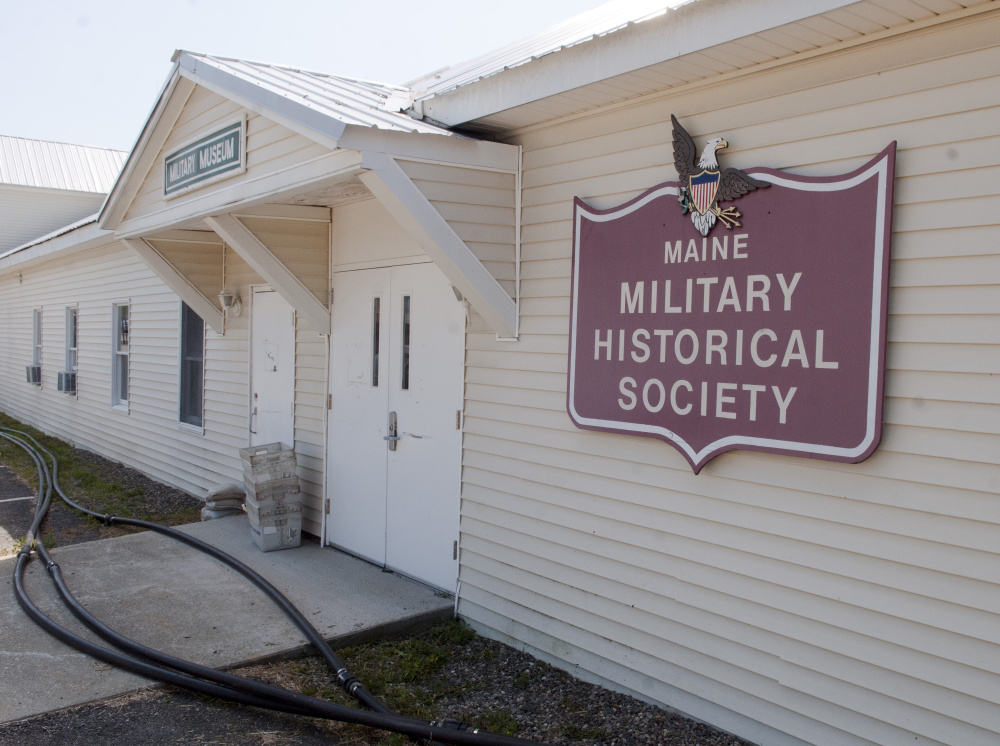Let’s take a break from the sad and divisive events of the last week and talk about something everyone can agree on: how to honor and commemorate this country’s military past.
OK, I guess that requires some explanation.
The Maine Military Historical Society is losing its museum space at the headquarters of the Maine National Guard as the Guard prepares to move from its longtime home at Camp Keyes. The brand new Camp Chamberlain, located near the Maine Veterans Memorial Cemetery off Civic Center Drive in Augusta, is set to open in January with no room for the museum, Camp Keyes will be demolished; the historical society doesn’t have a new site lined up.
We should make sure that their time as orphans does not last long. If recent events show us anything, it is the importance of understanding history. If the museum, held together for all these years on a small budget by dedicated volunteers, was underutilized in the past, now is the time to change that, and find a home that reflects its value.
The historical society has thousand of artifacts it has collected over the years, representing Mainers who have fought for this country since before Maine was a state, since before the United States was a country even.
Some of its artifacts celebrate the most famous and decorated Mainers to ever sign up for service. There is a pistol donated by the family of Civil War general and Maine governor Joshua Chamberlain. It is believed to have belonged to the Gettysburg hero — it has his initials engraved on the butt of its handle.
There is also the Medal of Honor awarded to Army Brig. Gen. Andrew Spurling, who single-handedly captured three Confederate soldiers after wounding two in a shoot-out in Alabama, keeping information on Union troop movement from falling to the enemy.
But there are also countless items sent from families and soldiers whose names you won’t recognize but whose service, and time in history, demand to be remembered.
In addition to all the Civil War memorabilia, there are citizen militia flags and drill manuals that pre-date the Revolutionary War. There are uniforms, weapons and photos from both world wars, a Korean War-era Jeep, and items brought home by Maine soldiers from Vietnam and the recent wars in Iraq and Afghanistan.
The museum is operated on about $8,000 a year, and run by volunteers. The foremost among those volunteers, Ronald Roussel, acted as the museum’s first and only curator until his stroke last year. There is no money for a new building, and it will not be easy for them to find a new partner.
The historical society says it has had informal discussions with the Maine State Museum, with whom they already exchange artifacts. That seems like a natural fit. But are there resources available? Will someone else step up?
We hope so. The historical society’s collection shows how Maine has contributed to our country’s defense since it first became necessary for Americans to take up arms. It is a history that is important to recognize and remember, and which is not told in too many other places.
We agree with Brig. Gen. Dwaine Drummond, director of joint staff for the Maine Guard.
“It’s always good to remind our young soldiers of the strong heritage of service Maine has,” he told the Kennebec Journal. “It’s important to remind our younger members why they wear the uniform and what that means, and understand those who have gone before us and paved the way. “It’s a story every American needs to hear, not just the military.”
Send questions/comments to the editors.



Comments are no longer available on this story